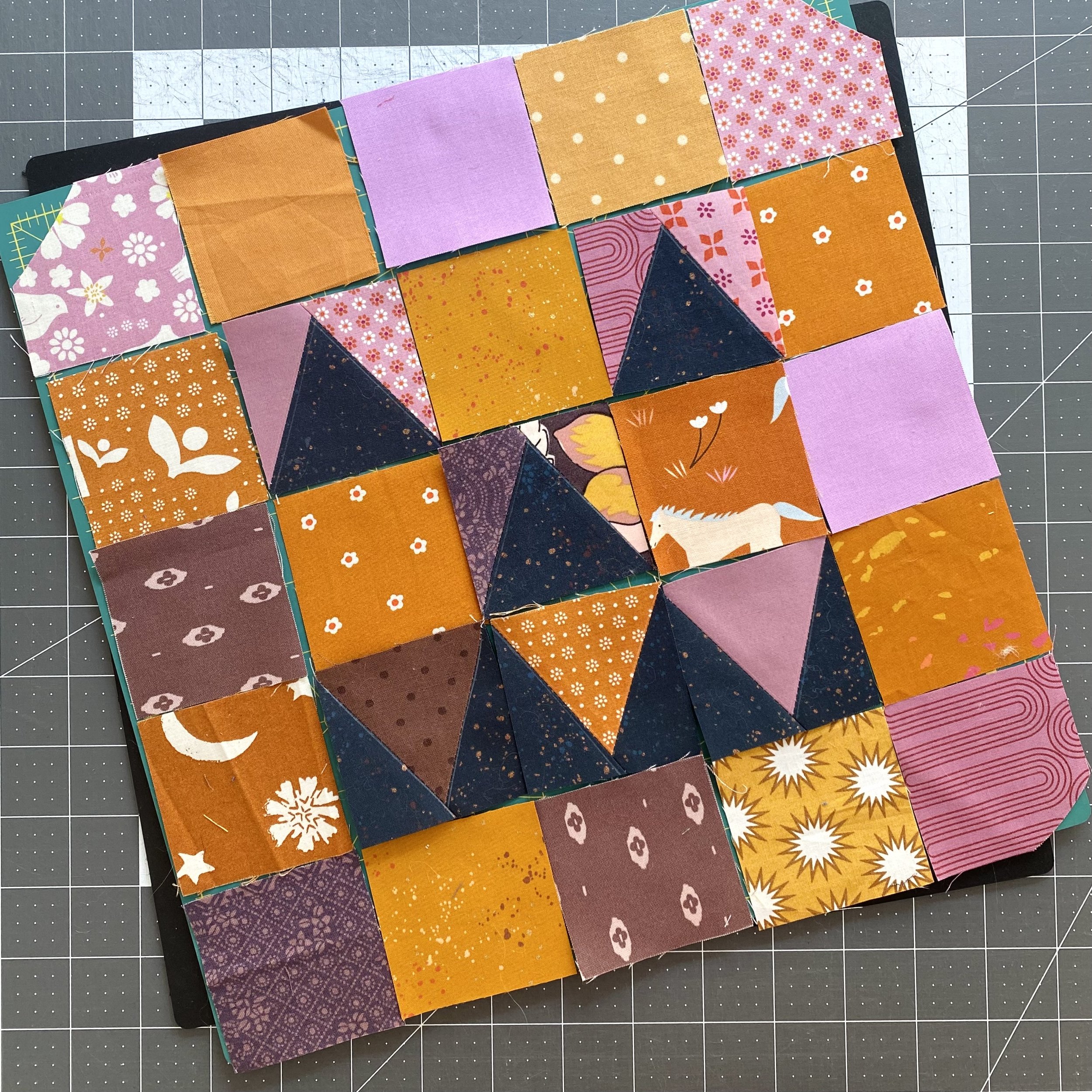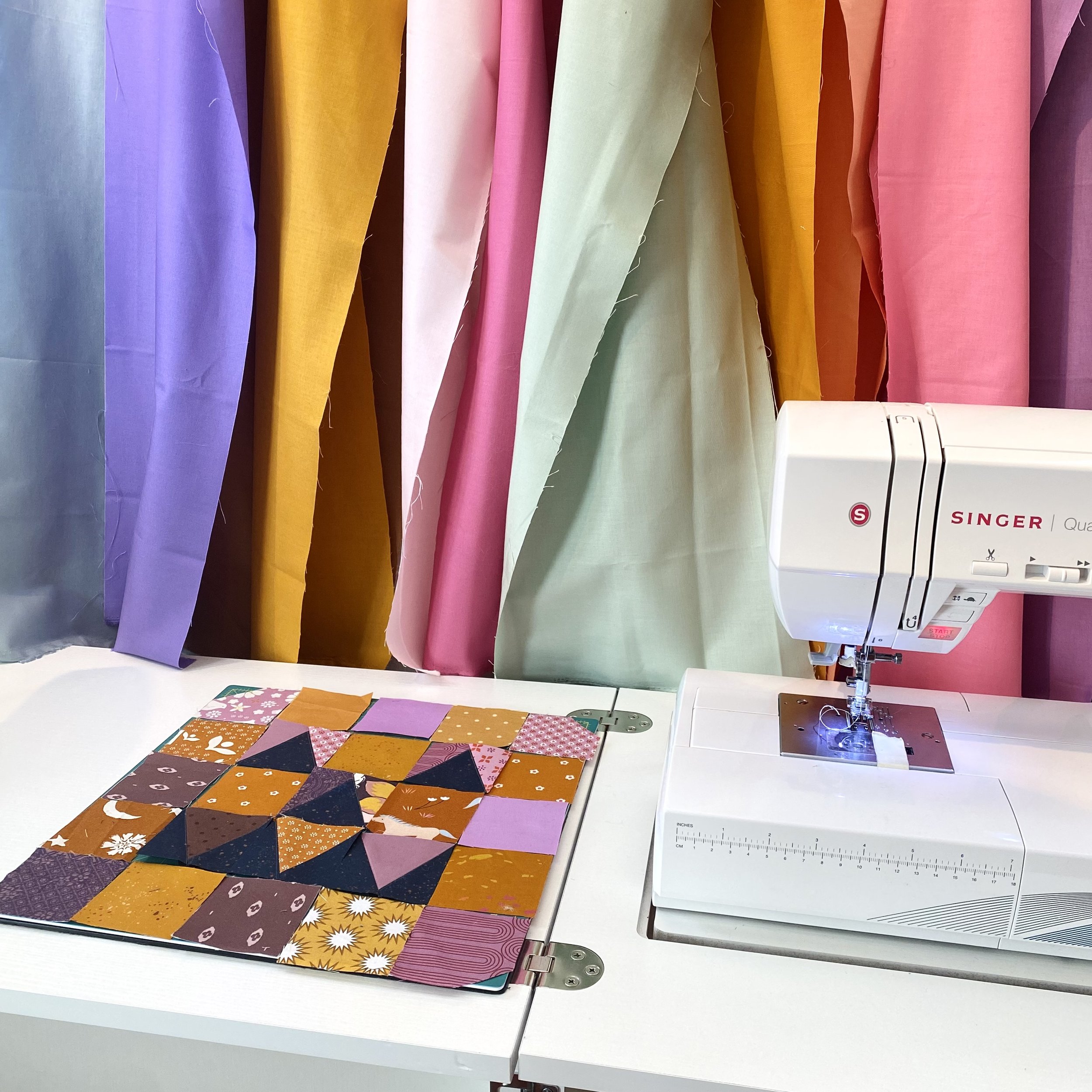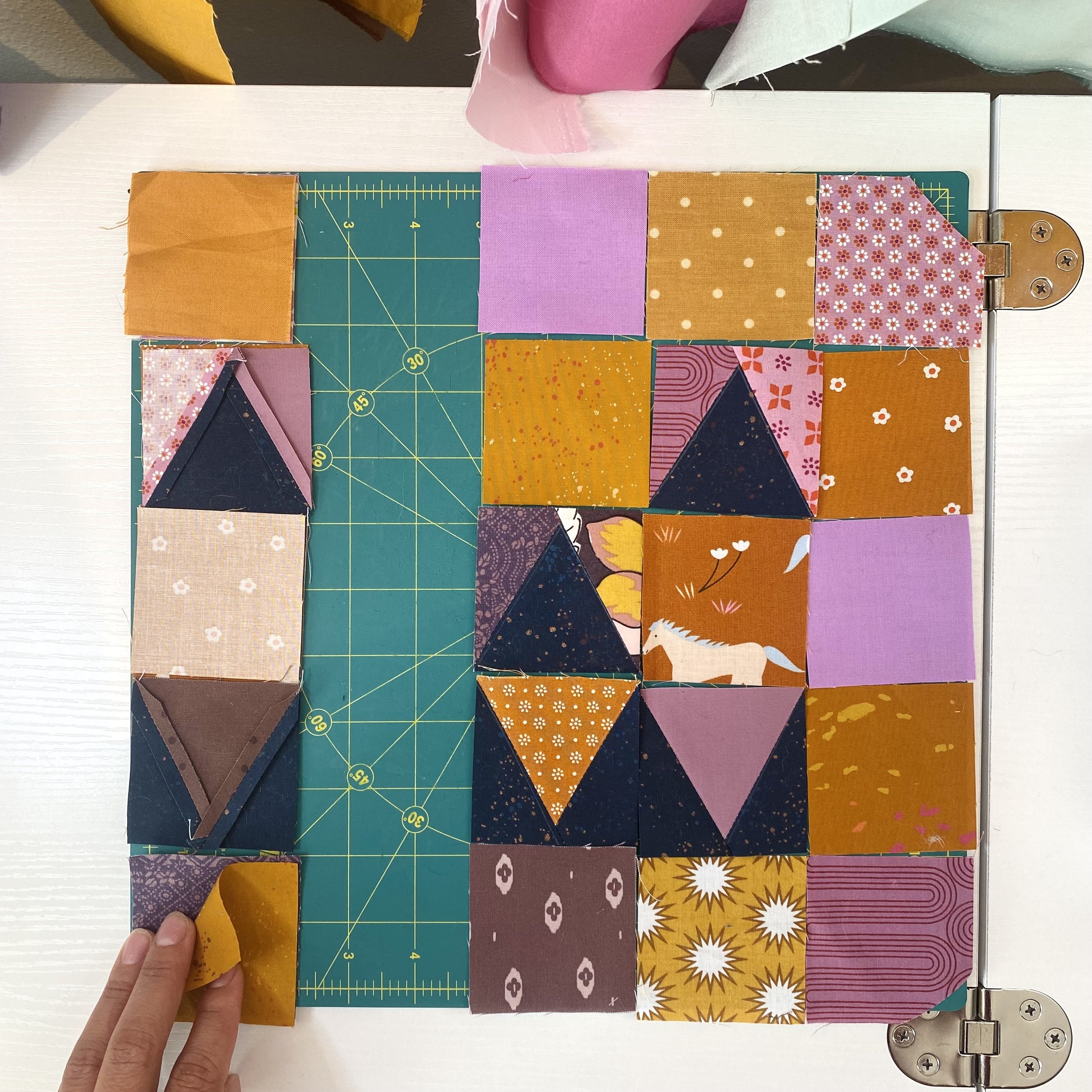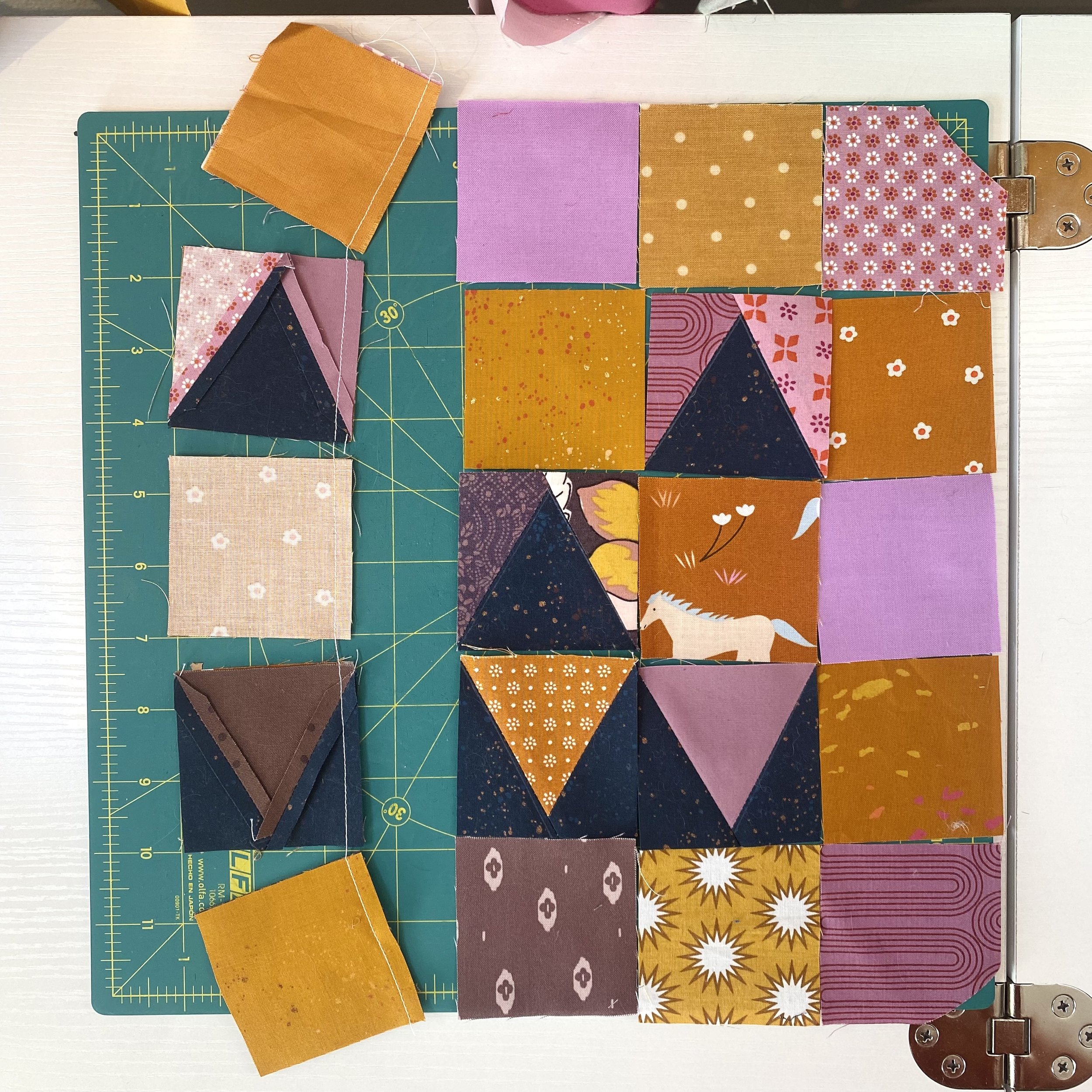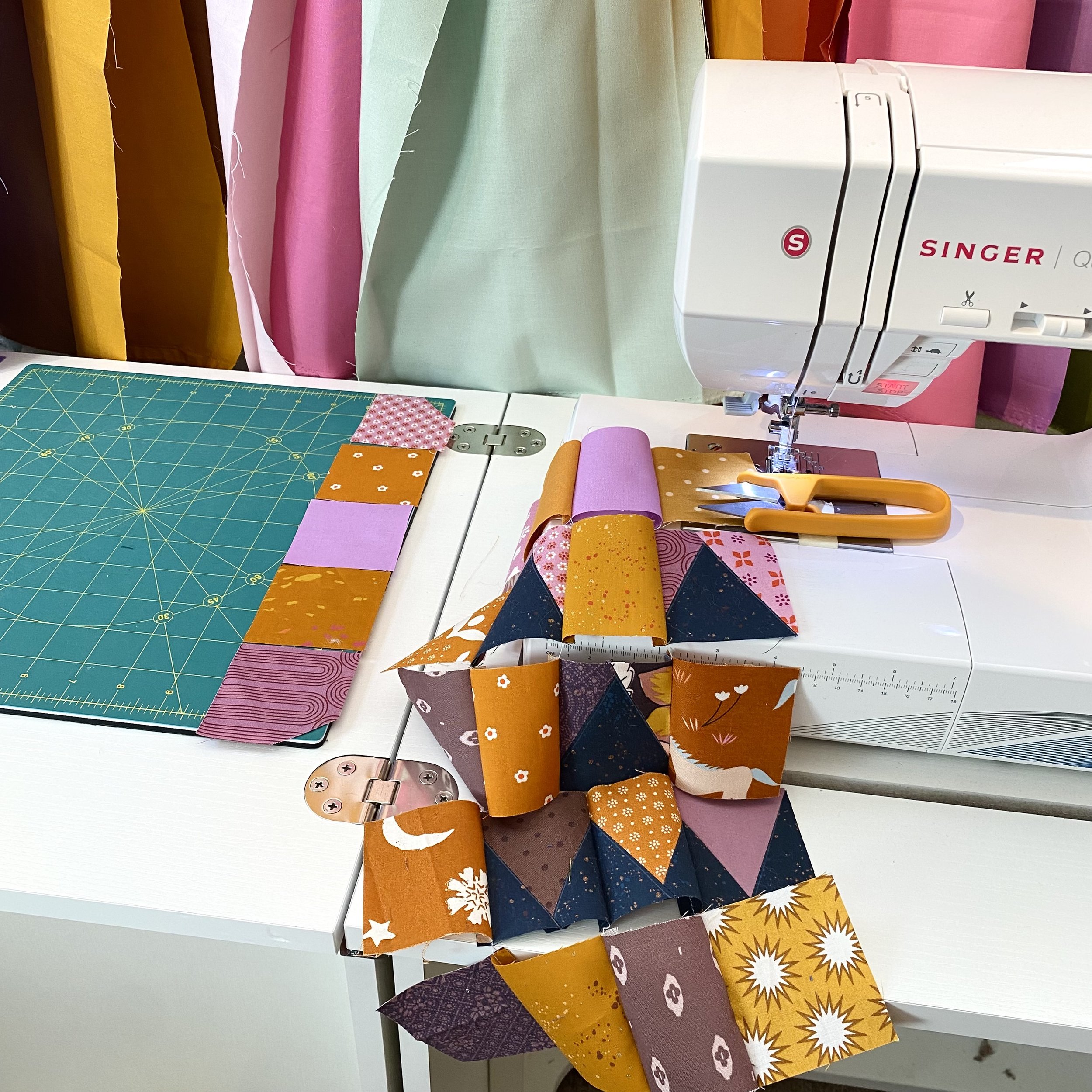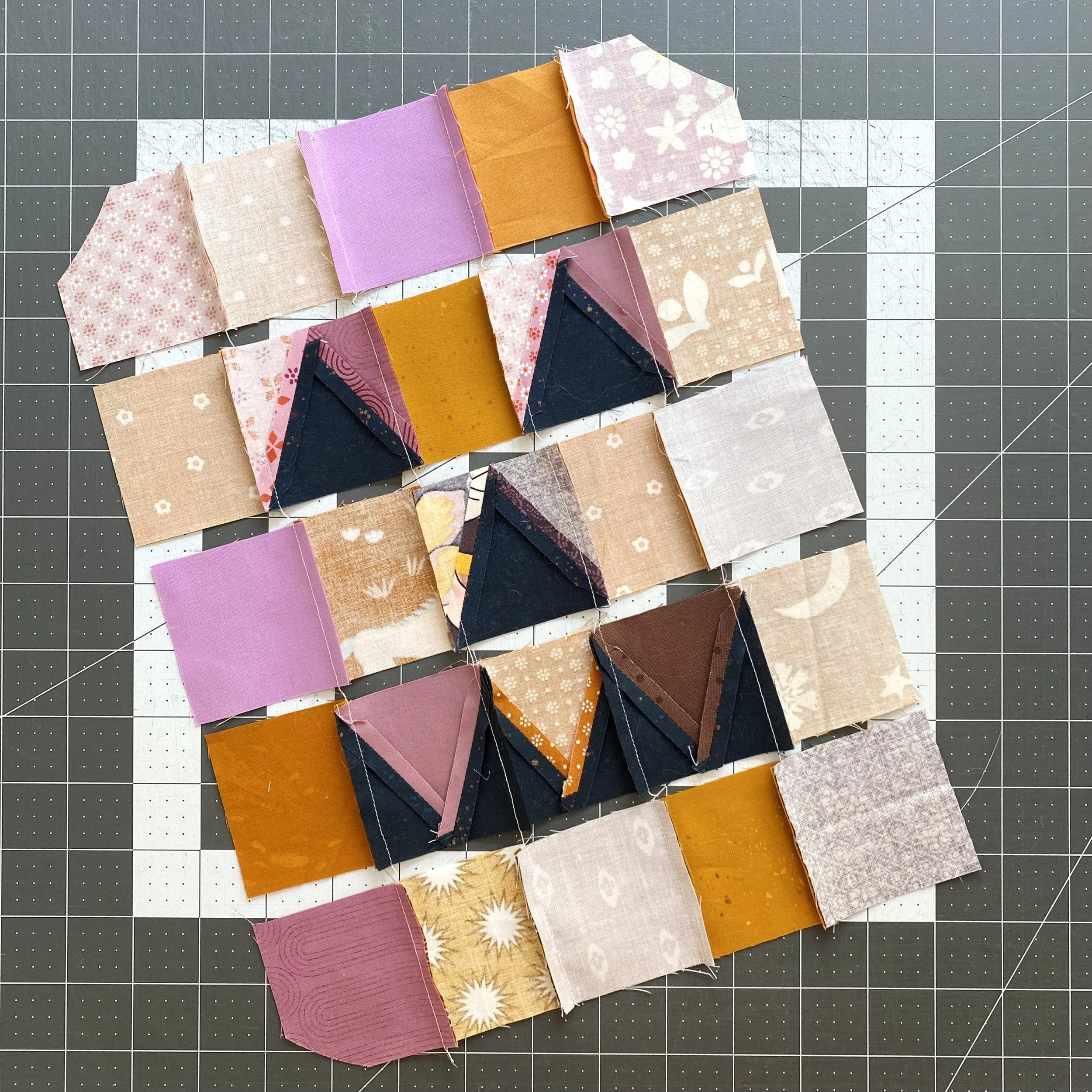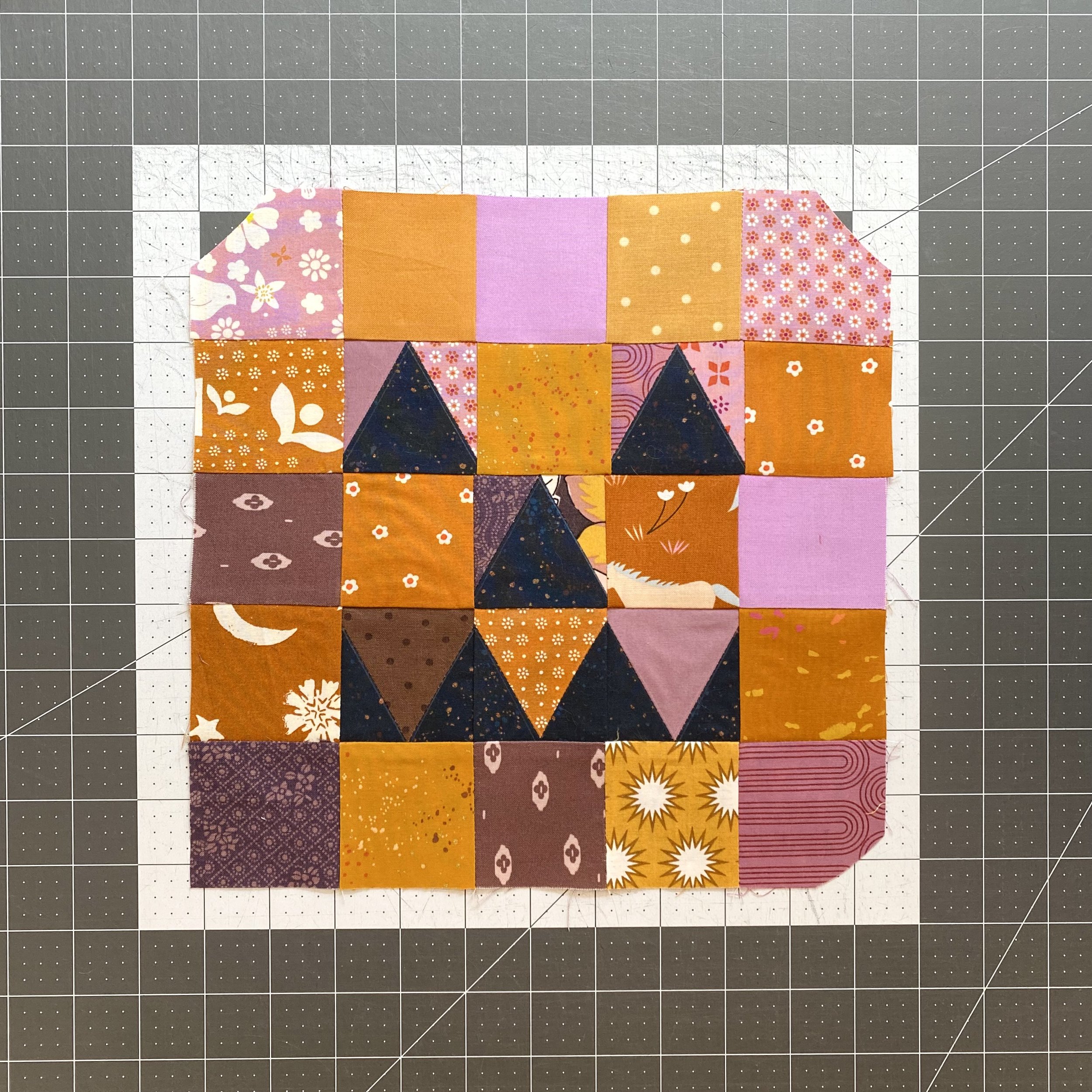Pump Queen: Patchwork Web Piecing
Web piecing is such a soothing, satisfying part of quilting. If you’ve never web pieced a quilt block before, it’s a efficient method of assembling the block that speeds up your sewing.
The goal of web piecing is to sew the rows together by working our way down the columns.
I recommend checking your seam allowance. I keep a piece of tape on my machine, and use that as a guide for all my piecing.
I prep my pieces by laying out all the squares and triangles in the correct order on the right side of my machine.
Flip units in the second column over so they are face down on top of the first column. One at at time, sew each pair together. Do not cut thread between the pairs.
Once columns 1 and 2 are sewn together, you can bring the entire chain back over. Because everything is laid out so nicely, it is easy to see which square gets sewn next. All the squares in column 3 get sewn to the squares in column 2. Open up the top pair of row 1 and sew the top piece in column 3 to it. Continue working your way down each column in this manner, bring the chained units back to the unsewn units when each column is finished.
Eventually, you’ll end up with pieced rows that are attached to each other by short lengths of thread.
Here is the whole unit. Look closely and you’ll see that all the rows are connected to each other.
Once all the rows are stitched, I like to finger press the seams in alternating directions for nesting seams. I almost always prefer nesting seams; I experimented with pressing the triangle seams open in this block…I did not like it. You could always take the web pieced unit over to your iron to press before sewing the rows together, but I found that finger pressing does the job well enough.
To sew the rows together, I sew together rows 1, 2, and 3. Then I sew row 4 to row 5, then finally the whole thing. I don’t use pins because the nesting seams help keep everything aligned.
Before trimming the patchwork using Template 2 of the Pump Queen pattern, I like to leave this under a heavy book overnight, as this helps the seams stay flat during final assembly.

